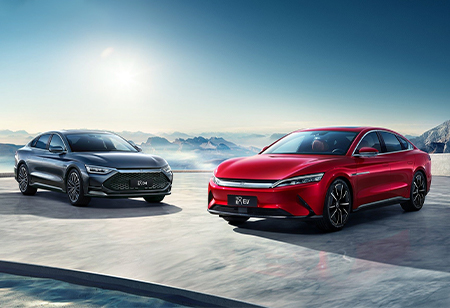
Toyota’s Solid State Battery Technology Could Help Achieving Sustainable Goals


It goes without saying that more nations are worried about the threat posed by climate change. Moreover, many geographies deal with more extreme weather, including intense droughts, flooding, storms, heat waves, and rising sea levels. The need to lower carbon emissions globally and develop a more sustainable transportation industry is ever-increasing. There are many ways to achieve these objectives, though. While the environment must be protected, and there are various measures to minimize climate change, electric vehicles play an essential role in maintaining climatic changes.
The world's largest automaker, Toyota, has issued a warning to the industry: It's time to radically rethink traditional manufacturing. The current generation of vehicle makers is pursuing this path forward in adopting EVs. Toyota is moving quickly with its intentions to eventually build EVs with a range of more than 1,488 km, boosting the development of solid-state batteries in response to technological advancement in their endurance. Because they use a solid electrolyte rather than a liquid one, like today's lithium-ion batteries, solid-state batteries, as opposed to current-generation batteries, offer a far higher energy density.
Hybrid Electric Vehicles
Global demand for hybrid electric vehicles (EVs) is rising, and more automakers are introducing brand-new models. The charging durations and driving range of EVs, however, are one glaring shortcoming. These vehicles are now constrained by how far they can travel on their battery packs and need additional downtime to recharge. By incorporating solid-state batteries into its array of electrified vehicles as early as 2027, along with other innovations that will increase their driving range while also lowering costs, Toyota hopes to improve these vehicles. Despite being more expensive, solid-state batteries can store more energy than liquid electrolyte batteries. According to the Japanese carmaker, next-generation lithium-ion batteries will be able to provide a cruising range of 1,000 km by 2026.
Playing Catch up
The actions are part of Toyota's expansive plan to speed up EV development, an area in which the Japanese automaker has lagged behind rivals. As a result, customers should find Toyota EVs more alluring because they won't experience range anxiety and have longer driving ranges than cars powered by internal combustion engines. The business also said it intended to switch from lithium-ion batteries to lithium-iron phosphate batteries, which are less expensive and have gained popularity in other EV markets, such as China.
Toyota has also shared its vision for battery technology for the upcoming years, outlining its aims to give customers who seek longer driving ranges at a reduced price a variety of options. Additionally, it demonstrates Toyota's intention to provide two new battery types in 2026 and 2027, including performance and popularization variations. The performance model will still use the same lithium nickel cobalt manganese (NCM) battery chemistry as is currently available but will have a 20 percent increase in driving range and a 20 percent cost reduction, according to the image, even though the automaker hasn't provided any additional information about these battery packs. In contrast, the popularization model uses the same technology but costs 40 percent less, providing 20 percent more driving range.
Regarding its future development, it appears that Toyota will introduce a high-performance battery with a bipolar structure and a high nickel cathode to boost the cruising range by 10 percent, cut costs by 20 percent, and provides speedy charging in 20 minutes or less.
Solid State Battery Technology
Toyota claims to have made progress in the field of solid-state electric vehicle batteries. The company has stated that it is anticipated to give a 20 percent gain in cruising range and a 10-minute quick charge time, though it didn't provide many specifics on the discovery. A more powerful model is being researched and developed; Toyota claims it will have a cruising range that is 50 percent longer, or over 1,448 kilometers.
By 2027 to 2028, the Japanese company is expected to begin mass-producing these revolutionary solid-state LFP batteries. However, keep in mind that since sodium-ion batteries are just starting to become popular in China, a lot might change between now and 2027. Because sodium is more plentiful than lithium, manufacturing sodium-ion batteries is simpler.
What does it Mean for EV Buyers?
Bipolar lithium iron phosphate batteries intended for less expensive BEV cars will be 40 percent less expensive than the previous generation somewhere in 2026–2027. They will still make the bZ4X's range 20 percent longer. High-performance lithium-ion batteries will start showing up in some cars around 2027–2028, offering a 10 percent increase in range over next-generation lithium-ion packs.
Besides, Toyota’s half-a-decade-old plans for rolling out its first solid-state batteries are coming to effect now. These will make it possible to drive up to 1,200 km on a full charge and go from 10-80 percent in 10 minutes or less, which is almost as quick as a trip to the gas station with an ICE-powered vehicle.

